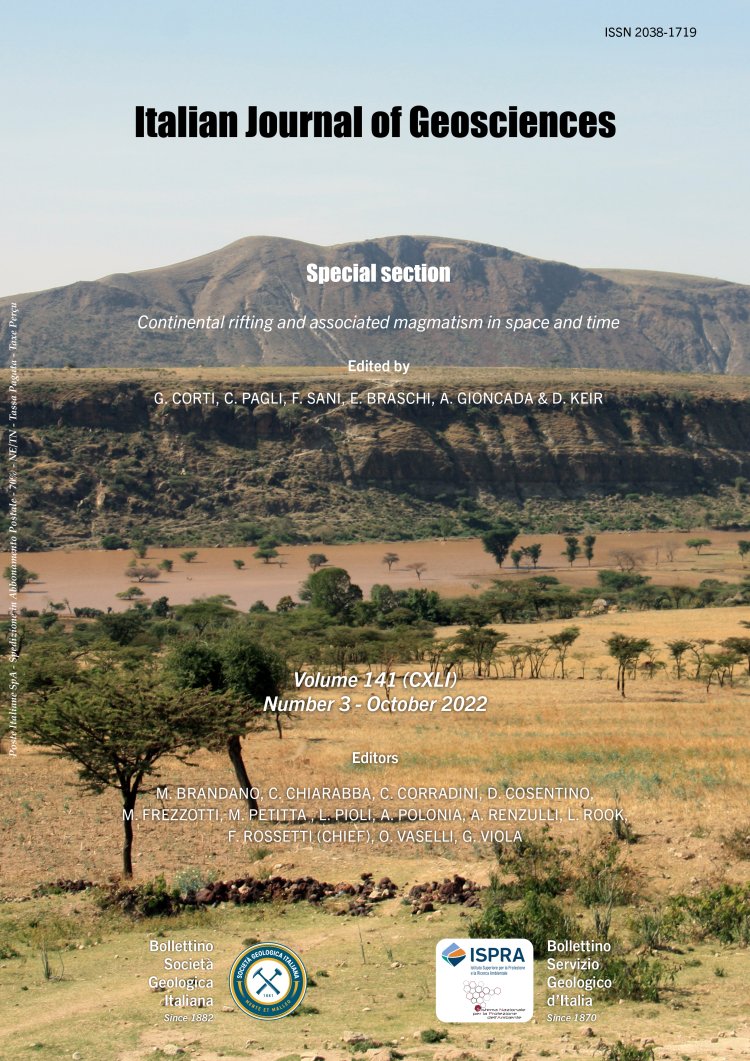

Geochemical and isotopic (Sr-Nd-Pb) signature of crustal contamination in Na-alkali basaltic magmas of South-East Turkey
Samuele Agostini1, Paolo Di Giuseppe1, Piero Manetti1,2, Mehmet Yılmaz Savaşçın3 & Sandro Conticelli2,4
1Istituto di Geoscienze e Georisorse, Area della Ricerca di Pisa, Consiglio Nazionale delle Ricerche, Via G. Moruzzi, 1, I-56124, Pisa, Italy.
2Dipartimento di Scienze della Terra, Università degli Studi di Firenze, Via G. La Pira, 4, I-50121, Firenze, Italy.
3 Jeoloji Mühendisliği Bölümü, Munzur Üniversitesi, TR-62000, Tunceli, Turkey.
4Istituto di Geologia Ambientale e Geoingegneria, Consiglio Nazionale delle Ricerche, Area della Ricerca di Roma1 - Montelibretti, Via Salaria Km
29,300, 00015 Monterotondo, Italy.
Corresponding author e-mail: p.digiuseppe@igg.cnr.it
Volume: 141 (2022) f.3
Pages: 363-384
Abstract
Widespread sodic alkali basaltic activity developed from Early Miocene to Pleistocene, around the northern termination of the Dead Sea Fault Zone, and in the North-West foreland of the Arabian Plate, in South-East Turkey. Volcanic activity started within the Gaziantep Basin during the Early-Late Miocene (21.2-7.0 Ma), and further East, abundant magmatism brought to the formation of the Karacadağ Shield Volcano, starting from Middle Miocene throughout the Holocene (12.1-0.01 Ma). During the Pleistocene, volcanism developed also around the Anatolia-Africa-Arabia triple junction, along the Karataş-Osmaniye Fault, and along the northern segment of the Dead Sea Fault, in the Karasu Basin.
Volcanic rocks emplaced in these areas mainly consist of abundant basalts and basanites, with subordinate hawaiites and basaltic andesites, mostly showing Na-alkaline affinity, whereas some of the older products show calc-alkaline signatures. As a whole, these volcanic rocks show LREE/HREE and HFSE/LILE ratios similar to those of OIB-like magmas. Some trace element and radiogenic isotope variations are observed amongst the less differentiated samples and they are explained by partial melting of a heterogeneous subcontinental mantle source at variable depths, mostly in the garnet stability field.
The largest compositional variability observed, however, is attributed to differentiation processes, resulting in quite remarkable chemical and isotopic variations (e.g., 87Sr/86Sr = 0.70301-0.70529; 143Nd/144Nd = 0.51263- 0.51294; 206Pb/204Pb = 18.78-19.47; 207Pb/204Pb = 15.57-15.72; 208Pb/204Pb = 38.75-39.27). This implies the occurrence of open-system magma evolution, characterised by crystal fractionation at low pressure of mineral assemblage made up by olivine ± plagioclase ± clinopyroxene + apatite + Fe-Ti oxides, coupled with assimilation of crustal materials. The extent and the chemical modifications induced by this process are such that in some of the oldest and most evolved samples, the pristine Na-alkaline affinity is obliterated, and a secondary subalkaline signature is overprinted. This effect is less evident or negligible in more recent lavas, which preserve their primary features, being erupted in a well-developed fault system or in a long lasting, chemically homogeneous, magmatic feeding system.
The magmatism studied here is quite unusual and not frequent in the frame of Na-alkaline intraplate volcanism, being characterised by abundant intermediate products and by evolutionary processes strongly affected by crustal contamination. In our view, this is due to the peculiar setting of the region, which is the locus of a significant mantle upwelling, accompanied by very limited or absent extensional rate.
Keywords
Miocene-Holocene Volcanism, Na-alkali basalts, Assimilation plus Fractional Crystallisation, Isotope Geochemistry.
Get Full Text Supplementary Material